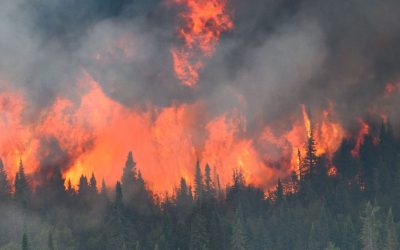EDMONTON (CP) — David Phillips loves to ask people whether Canada, Venezuela, Lebanon, Cuba or Bangladesh has had the highest recorded temperature.
For Phillips, a senior climatologist with the Meteorological Service of Canada, the best part of the question is watching people’s reactions to his answer: Canada, with a record of 45° C set on July 5, 1937, in Yellowgrass.
But that one sweltering day was nothing compared with the heat wave the year before, explains Phillips.
Seventy years ago this week, a two-week heat wave across much of Canada claimed the lives of almost 800 people, destroyed crops, killed livestock and even prompted the authorities to allow topless bathing suits on men.
From July 5-17, 1936, the country baked from Alberta to Ontario, with temperatures soaring as high as 44.4° C in St. Albans, Man.
Winnipeg faced lows of 28.3° C, and an Ontario provincial record was set with a temperature of 42.2° C in Atikokan.
In total, the heat wave killed 780 Canadians and was linked to another 400 indirect casualties, including several drownings.
In Toronto alone, over 225 people succumbed to temperatures reaching as high as 41.1° C.
Phillips calls the 1936 hot spell the “granddaddy” of all Canadian heat waves.
“We are a cold country, the second-coldest in the world, and yet the greatest loss of life (due to weather conditions) was from a 10-day heat wave in July of ’36.”
Phillips says modern inventions such as air conditioning make it unlikely Canada will ever see the same loss of life from a heat wave as it did during those two weeks.
“When I look back and I try and see what effect it had on people, it was truly amazing because there was no escaping,” he explained.
“Now we tell people that when you want to get away from the heat wave, you go to malls and shows or you turn on your air conditioning, you drive your air-conditioned cars or go to your air-conditioned offices.
“But back then, my gosh, people would do things like reverse the flow on their vacuum cleaner just to get a bit of a breeze.”
Horses drawing carriages were known simply to drop dead in the street because of the heat, fruit literally baked on the trees and transients were recruited directly off trains to help fight forest fires.
“We talk about climate change and conditions being warmer now, but they aren’t nearly as intense as they were back in ’36,” said Phillips, who has authored several books on Canada’s climate.
He added that while hot spells in Canada over the last 70 years haven’t come close to 1936 in terms of duration, severity and geographical extent, that doesn’t mean global warming is not a reality.
“There’s probably as many (hot days) now as there were back then, but what’s different is the nighttime temperatures. We don’t cool off at night as much as we did back then . . . and that’s because more of the heat is trapped in at night,” said Phillips, adding that Canadian winters have also warmed up more than our summers.
But Tim Ball, an environmental consultant based in Victoria and one of the first Canadians to receive a PhD in climatology, contends that what may appear to be global warming is simply a natural fluctuation.
“Climate change is all the time, always has been, always will be, and the idea that climate change is something new is part of the attempt to mislead people,” said Ball, who questions the tendency to blame any environmental extremes on human action.
While Ball said Canadian climate records don’t go back far enough to accurately assess climate change, he said the extremes seen in 1936 do show that natural fluctuations have always existed.
“I could pick any period at any time and I can show you greater extremes, lower extremes,” said Ball. “The climate is changing all the time, and what’s going on right now is well within natural variability.”


